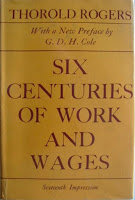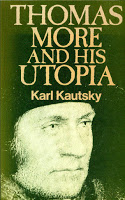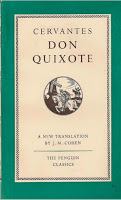About Books
 When Plato, Aristotle and others of their day spoke about Greece and the Greeks, they did not include the slaves; when historians of the 18th and 19th centuries wrote about Americans, they gave no heed to the negro slaves. Likewise today, when there is so much blather about the Elizabethan age, our super-patriots and political quacks refer only to the upper crust of the late 16th century society, not to the Toms, Dicks and Harrys who had to strive to earn a meagre living by the sweat of their brows. Not only are the humble workers not mentioned, they are not even considered. A picture of prosperity and regal pageantry is painted against a background of period architecture and costume, with farthingales, ruffs and fancy pants much in evidence. To have painted against a background of masses of hungry, oppressed serfs and workers would have spoiled the colourful effect, and destroyed the object of the painting.
When Plato, Aristotle and others of their day spoke about Greece and the Greeks, they did not include the slaves; when historians of the 18th and 19th centuries wrote about Americans, they gave no heed to the negro slaves. Likewise today, when there is so much blather about the Elizabethan age, our super-patriots and political quacks refer only to the upper crust of the late 16th century society, not to the Toms, Dicks and Harrys who had to strive to earn a meagre living by the sweat of their brows. Not only are the humble workers not mentioned, they are not even considered. A picture of prosperity and regal pageantry is painted against a background of period architecture and costume, with farthingales, ruffs and fancy pants much in evidence. To have painted against a background of masses of hungry, oppressed serfs and workers would have spoiled the colourful effect, and destroyed the object of the painting.
We Socialists are inoculated against this “Elizabethan fever,” but living daily in the very heart of the epidemic it is hard to avoid becoming slightly infected. So we find ourselves pulling books from the bookshelves and reading about the age of Elizabeth I. Some most illuminating reading we can assure you.
We passed over the history books that deal with such world-shattering events as the gallantry of Sir Walter Raleigh in spreading his cloak over a mud puddle for his queen; the cool, casual courage of Sir Francis Drake, finishing his game of bowls whilst the Spanish Armada was in sight, and the heart-flutterings and hand-holdings of Good Queen Bess and her noble lovers. We selected books that told of the domestic tragedy of a certain Joan Wynstone who, on February 6th, 1575, was whipped and branded as a vagabond, on July 26th was saved from being hanged by being set to service to her husband, and on October 3rd, having run away from the husband, was caught and hanged. We browsed into books that gave records of the rates of wages paid and the cost of living during the years of the reign of Elizabeth I. And we read how many a noble lord, whose descendants were privileged to be inside Westminster Abbey on June 2nd this year, laid the foundations of the family fortunes by indulging in practices that would have brought a blush of shame to the cheek of an 18th century highwayman, and by investing in schemes that to this day give off a strong smell of working class blood and sweat.
For the benefit of anyone who may wish to follow our example and try to get a true picture of the conditions of life for the vast majority of people during the reign of Elizabeth I, we will list a few books.
First there is a book that is completely lacking in sensational writing but crammed from cover to cover with facts and figures of rates of pay for workers in various trades in different parts of the country at different times of the year, together with details of the cost of necessary commodities, fluctuations in price with their causes, and comparative figures with other periods. It will not be possible to buy this book now-a-days but it can be obtained from public libraries. It is entitled, “Six Centuries of Work and Wages” by Professor James E. Thorold Rogers, M.P. The book was originally published by Swan Sonncnschcin and Co., Ltd., but there have been many editions. It has, as its subtitle, “ The History of English Labour,” and that is just what it is.
In another book by Thorold Rogers there appears an interesting statement.
“… from 1260 to 1540 poverty was a distant risk in England.”—(“The Industrial and Commercial History of England,” page 10.)
This very concise statement throws the poverty of Elizabethan days into bold relief in contrast with the nearly three centuries to which Mr. Rogers refers.
Another book that tells a very gruesome story of working class suffering is “An Economic History of England, 1066 to 1874,” by Charlotte M. Waters, published by Oxford University Press. The author deals, interestingly and with numerous illustrations, with the causes of working class poverty during the latter fifty years of the 16th century; the break up of the feudal system, tenants turned from their land by landlords who enclosed large tracts for sheep farms, bands of feudal soldiers dismissed from their service, manufacture replacing handicraft, etc. A very, very useful book indeed.

If one would thoroughly understand that period of change that culminated with the English revolution during the 17th century and was at its highest tempo during the reign of Elizabeth I, one should read “Thomas More and his Utopia” by Karl Kautsky published by A. & C. Black, Ltd. Sir Thomas More died in 1535, two years after Elizabeth I was born and twenty-three before she succeeded to the throne. He cannot be classified as an Elizabethan, but Karl Kautsky, in writing of him and his work, devotes a large portion of his book to sketching a background of the social conditions of the 15th and 16th centuries in order that his readers may see the life of More in its proper perspective. So, we get a splendid history of the times and conditions under which the poor of the Elizabethan age lived.
To keep the list as short as possible we will mention only one more work, a well known one; “Capital” by Karl Marx. In Volume I of this great work, part VIII, Chapter XXV111, entitled, “Bloody Legislation against the expropriated from the end of 15th Century. Forcing down Wages by Acts of Parliament,” Marx tells of the cruelty of the oppressive working class legislation of the period and gives us chapter and verse of a number of the acts that were passed and enforced.
Other books dealing with this period of English history can be traced through the bibliographies in the ones we have mentioned should anyone wish to study the period in greater detail. There are also constitutional histories, political histories and social histories of recent publication dates that will help to build up a complete picture of the age.

When one realises that the Elizabethan period was a time of acute class struggle between the rising capitalist class and the decaying feudal groups one is better able to appreciate the works of men like William Shakespeare 1564-1616, and Miguel dc Cervantes, 1547- 1616. Both of these men, although they probably did not understand the social events that were taking place around them, at least saw those events and wrote about them. In novels, poems and plays they joined in the popular ridicule of the expiring feudal aristocracy. Shakespeare lampoons them with his Sir John Falstaff and Cervantes does likewise with his Don Quixote.
There are numerous works of Shakespeare to be had now-a-days and there is a cheap issue of Don Quixote published by Penguin Books at 8s. 6d.
Equipped with the knowledge contained in these books we can better understand what our masters desire when they prate about the second Elizabethan age being as glorious as the first. They are not interested in our living conditions. They are looking with shining eyes to the prospect of expanding trade and commerce, to enterprises that produce such astounding profits as did the Levant Company and the East India Company, to support and encouragement by the state, and to a docile and disciplined working class. That is what they mean when they talk of the Glory of Britain, that is what all the flummery and speech making of the coronation period indicate.
W. Waters
